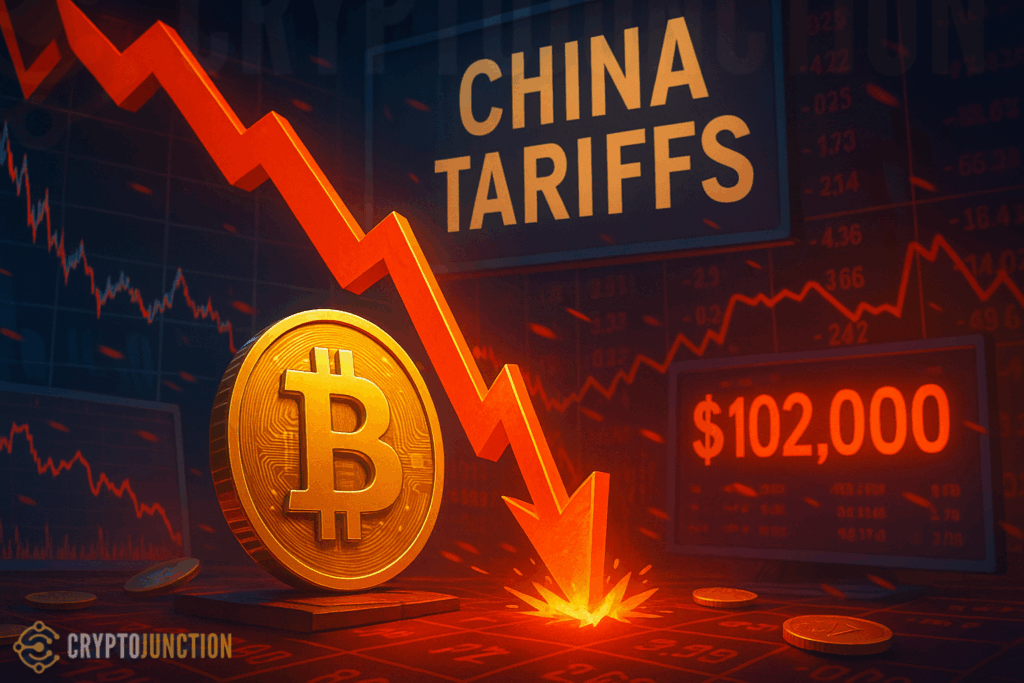The digital trading floors were chaotic. Traders stared at flashing red screens, liquidation alerts popping like fireworks. Then came the headline that changed everything—Donald Trump slapped a 100% tariff on China.
The reason is China reportedly plans to restrict exports of rare earth minerals—the essential backbone for computer chips, AI processors, and yes, even crypto mining rigs. Trump fired back on Truth Social, accusing China of taking an “extraordinarily aggressive position” on trade, effective November 1, 2025. Everyone was talking about the implications of a new China tariff announcement.
And just like that, markets spiraled. On Binance, Bitcoin’s perpetual futures pair crashed to $102,000, a three-month low. Coinbase spot prices weren’t far behind, dipping to $107,000. Data from CoinGlass revealed $9.4 billion in crypto liquidations within 24 hours—most from overleveraged longs.
It wasn’t just Bitcoin bleeding. Ethereum plunged below $3,500, Solana slipped under $140, and the global crypto market cap evaporated by nearly 12% overnight. The air was thick with panic and disbelief—crypto’s “September surprise” had arrived early.
China Tariff Ripple Effect: Rare Earths, Rare Calm
Here’s where it gets even more interesting. Rare earth minerals—those obscure elements you rarely think about—suddenly became the most valuable commodities on the planet. These materials power everything from smartphones to satellites to the GPUs that keep crypto mining alive. A China tariff focusing on these elements could drastically alter global supply chains.
If China limits their export, the ripple effects could choke the semiconductor industry. Think slower chip production, higher mining costs, and maybe even a technological bottleneck. The result? A deeper crypto winter, not from volatility, but from hardware starvation.
Meanwhile, Washington’s message was clear: reduce dependency on Chinese manufacturing. The tension between the world’s two biggest economies now extends beyond trade—it’s a battle for technological dominance.
Crypto, caught in the crossfire, has once again proven it’s no longer an isolated ecosystem—it’s tied to global economics more tightly than ever before.
China Tariff Fallout: Is This The Dip Or The Domino?
Now the billion-dollar question: is this a crash or a correction? Historically, crypto has thrived in chaos. Each time Bitcoin tanks, a new wave of investors sees opportunity in the ashes. But this time feels different.
The 100% China tariff isn’t a temporary scare—it’s a structural tremor. It touches every layer of global production, from chipmakers to miners. The narrative of “digital gold immune to politics” is fading. Bitcoin, it seems, bleeds when nations clash.
Still, amidst the panic, there’s a silver lining. Some analysts predict a rebound once the shock stabilizes. After all, Bitcoin has a PhD in comebacks.
Yet, traders remain on edge, refreshing charts like gamblers waiting for the next card. The suspense? Palpable. The future? Uncertain. But one thing’s for sure—crypto just entered a new geopolitical era where every tariff tweet, including those about the China tariff, can move billions.
Conclusion
Bitcoin’s fall to $102K was more than a market correction—it was a wake-up call. The new China tariff policy has shown that global politics and decentralized finance are now inseparably linked. As nations weaponize trade, crypto becomes both the battlefield and the prize. For investors, the game just got riskier—and far more interesting.

